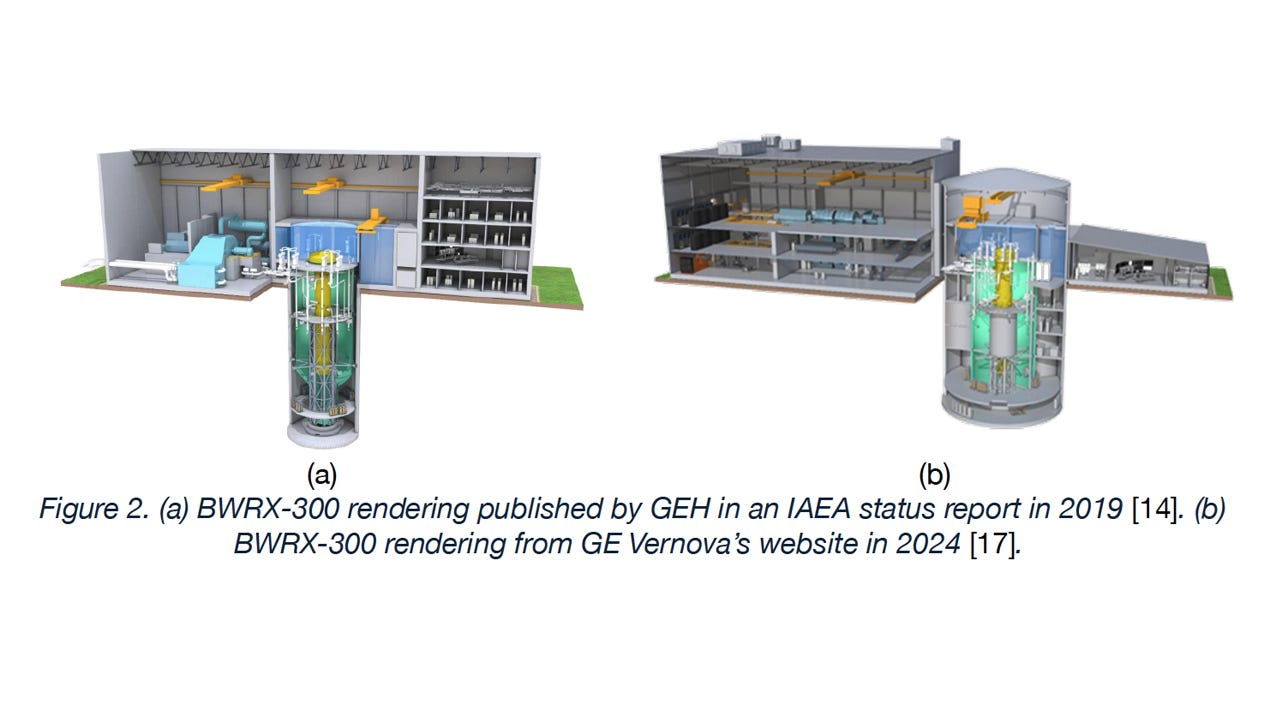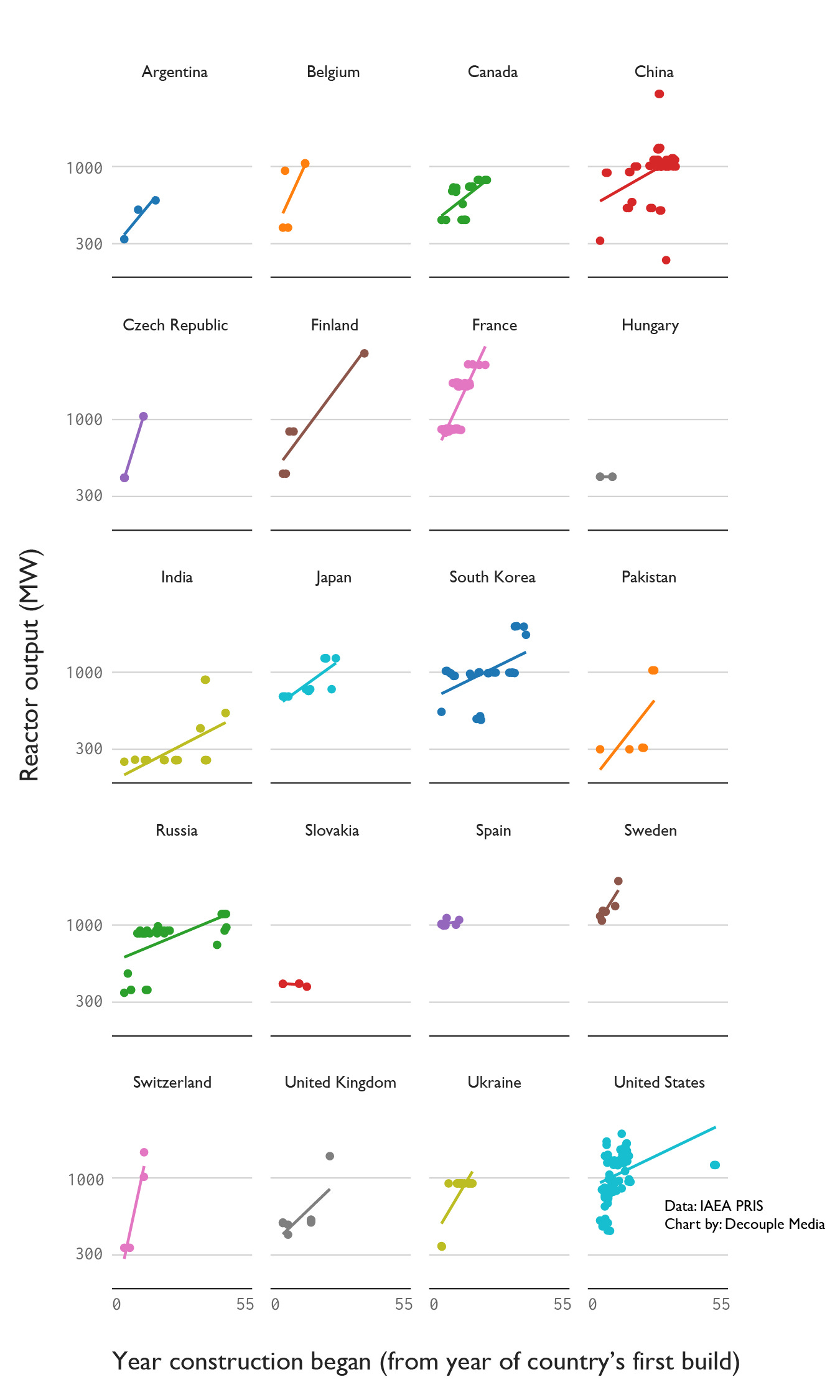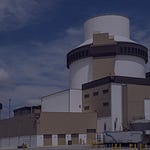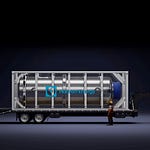We have an unusual episode today. One, because of its length (1 hour 40 minutes), and two, because I’m the guest. Joined by Aidan Morrison as acting host, I talk about a topic of intense interest to me: the Darlington SMR project in Ontario, Canada. I’ve been critical of this SMR project, which recently received its final investment decision, by calling for a pivot to CANDU reactors at the site.
I use this episode to break down all my reasons for being critical, and to concede ground to this bold SMR project where earned. This is not the first place I’ve shared my reasoning (media interview here, LinkedIn post there), but it is the most in-depth.
If you have time to listen to the full thing, I promise you will leave quite knowledgeable about the ambitious and capable Ontario nuclear sector, which I’ve studied and engaged with for years.
Prompting this episode was the OPG’s final investment decision on the SMR and the revelation of its eye-watering (though at the same time, refreshingly honest) cost estimates. I break down the US$4.5 billion price tag for the first 300 MW unit, the expected learning that will take place, and share why this represents not just a technical and economic challenge, but a strategic mistake that could undermine Canada’s competitive advantage in nuclear power. From the massive excavation challenges of burying a reactor ten stories underground to the national security risks of abandoning proven CANDU technology for American designs, I hope to share some of the hard truths behind the SMR hype.
Watch now on YouTube.
We Talk About
The final investment decision and true costs of Canada’s first SMR project
Why the BWRX-300 costs US$15,000 per kilowatt—comparable to Vogtle, the most expensive power plant ever built
The engineering reality behind digging a hole effectively eight lanes wide and ten stories deep
How design changes drove costs from US$1 billion to US$4.5 billion per reactor
The difference between paper reactors and real reactors (the Rickover memo in action)
Why standardization, key to SMR economics, was abandoned for site-specific design
The strategic mistake of choosing American technology over proven Canadian CANDU reactors
Export market realities and the geopolitical risks of US technology dependence
Why economies of scale in nuclear cannot be overcome by economies of multiples
The refurbishment success story that demonstrates Canada’s nuclear capabilities
Future scenarios for the project and implications for Canada’s energy independence
The broader question of whether SMRs solve any real problems in developed grids
Deeper Dive
If Rickover were watching
Admiral Rickover (watch our biographical episode with Nick Touran here) died 39 years ago. But his famous memo warned us long before that of the difference between “paper” reactors and “practical” ones.
A paper reactor is “simple… small… cheap… light… can be built very quickly… is very flexible… will use mostly ‘off-the-shelf’ components… [and] is not being built now.” A practical one, in contrast, “is being built now… It is behind schedule… It is requiring an immense amount of development on apparently trivial items… It is very expensive… It is complicated.”
The BWRX-300 project at Darlington has become a new example of this transition. It is the first SMR in the West to materially start moving off paper (really, computers now) and into practical execution. And the reality looks much harder than the earliest 3D renderings did.
When GE Hitachi first pitched the BWRX-300 reactor in 2018, the promise was an affordable $1 billion per unit, built in 24 to 36 months, manufactured in factories like cars. The Tennessee Valley Authority’s integrated resource plan shattered that illusion earlier this year with a more than US$5 billion estimate for the first-of-a-kind unit. Now, OPG has confirmed an estimate in the same ballpark: US$4.5 billion for the first unit, or about $15,000 per installed kilowatt. That puts this small reactor in the same cost category as Vogtle, the most expensive power plant humanity has ever constructed.
One of the reasons for this ballooning cost is the fundamental challenge of making natural circulation work at this scale. The reactor pressure vessel must be extraordinarily tall to allow water to circulate without pumps, a beautiful engineering concept that, less beautifully, requires digging downward to equivalent height of a 10-story building. And what started as a 22-meter diameter excavation has grown now with the re-introduction of previously eliminated systems to 36 meters, wider than an eight-lane highway. The concrete and steel requirements for these immense civil works have multiplied accordingly.

I spoke more in-depth on the topic of SMR civil works with James Krellenstein here.
The branch plant trap
Suffusing Canadian industrial policy in recent decades has been a tendency I am trying to fight: one toward self-effacement and lack of confidence in our own abilities. We show our bellies too quickly and hand over hard-earned technology to outside interests. As we wrote in the Canadians for Nuclear Energy report, “A Big Deal,” on the technology selection at the Bruce nuclear generating station:
CANDU is one of the last great Canadian innovations to resist transfer to foreign interests, bucking an all-too-common trend from the discovery of insulin to creation of the Bombardier C-Series.
Unveiling of the Avro Canada CF-105 Arrow, October 1957. To many, the cancellation of the Avro Arrow in 1959 symbolizes a missed opportunity for Canadian innovation and leadership in a high-tech sector.
“Technology agnosticism” disavows sentimentality in picking a reactor design. But public opinion, political support, and even storytelling are crucial aspects of success on long-duration megaprojects. This is particularly true in Canada, where politics has historically had a leading role in energy planning and projects. A project as large as Bruce C, lasting several years and costing tens of billions of dollars, will require an unassailable political backing and a compelling story with which to manage and engage a broad range of stakeholders.
The Darlington SMR seems to be another instance of Canada not learning its lesson. With the BWRX-300, we are once again abandoning our indigenous technology, and the history that comes along with it, for an American design. It’s the revival of “branch plant” economics, allowing foreign companies to retain intellectual property and strategic decision-making while Canadians provides the labor and capital. And in this case, prime real estate, too.
This matters beyond national pride. Canada has spent $26 billion refurbishing our CANDU reactors, creating perhaps the most capable nuclear supply chain in the Western world. We’ve proven we can deliver complex nuclear projects on time and on budget, something almost unheard of in recent times. We own the entire fuel cycle from Saskatchewan uranium mines to Ontario fuel fabrication. We have effective energy and technological sovereignty with CANDU reactors.
And yet we are gifting the Darlington site—one of only three approved nuclear sites in Ontario—to an American reactor design. We’re providing the financing, the skilled workers, the regulatory expertise, and the political capital. Meanwhile, GE Hitachi retains the intellectual property, and the U.S. retains ultimate export control authority. By not standing behind our own technology, Canada unfortunately negotiated this deal from a position of weakness, not strength.
The economics problem that won’t go away
The fundamental challenge with small modular reactors isn’t engineering—it’s economics. The main value of a reactor comes from its volume (how big the core is and therefore how much steam it can produce), which scales with the cube of its dimensions. The costs, on the other hand, come from its surfaces (containment, shielding, safety systems), which scale with the square of its dimensions. This means value increases faster than costs when you scale up. This basic surface-to-volume ratio problem means large reactors, all else being equal, will always be more economical than small ones. This was accepted as an uncontroversial fact back when we were actually building fleets of reactors.
Notice how in the chart below, nearly without exception, countries have tended to build larger reactors over time, even if they initially chose smaller reactors. It’s economics guided by physics.

The SMR industry promised to overcome their disadvantage in this regard through “economies of multiples,” or building so many small reactors in factories that mass production would beat economies of scale. But this has never happened in other power technologies. We don’t build large gas plants by stacking numerous truck engines together. When aircraft manufacturers scale up their jets, they build bigger engines rather than add more small ones.
And the BWRX-300 at Darlington isn’t even modular. First-of-a-kind combined with modular construction is simply too risky, so they’ve decided to build it the old-fashioned way, on-site. Modularity might come later, after they work out the initial construction—if there are later units to build.
Export dreams and geopolitical realities
As costs rise and the SMR’s electrical output starts to seem small compared with projected power needs, the project’s justification has increasingly relied on its claimed export potential. Ontario doesn’t plan to build more SMRs—we’re planning gigawatts of large nuclear instead. So, can we think of this $4.5 billion reactor as a demonstration project for international markets? The export case is more complex than Ontario’s energy minister suggests.
The design has already drifted away from its original intention of total standardization that would allow identical versions to be built anywhere. For instance, it has been tailored to Darlington’s specific seismic conditions and is currently unsuitable for higher-seismicity sites like Tennessee Valley Authority’s Clinch River location. This is not an insuperable obstacle, but by needing further design changes before entering the export market, the Darlington BWRX-300 is far from the springboard to international sales it set out to be.
More troubling are the geopolitical risks. The BWRX-300 is a US-origin technology subject to US export controls. The Secretary of Energy—a political appointee—ultimately decides where this reactor can be exported under US nuclear export controls (10 CFR Part 810). In an era of trade wars and increasingly bellicose US rhetoric toward Canada, betting our nuclear future on American goodwill seems remarkably naive.
The path forward
As the final investment decision has been reached, the project will likely proceed. Too much political capital and actual capital has been invested to stop now. But the lessons are clear. Small modular reactors are not a panacea. They’re expensive, complex, and solve problems that don’t really exist in most developed grids. The real opportunity cost isn’t just the US$4.5 billion. Rather, it’s the foregone opportunity to build proven CANDU technology that we actually own and control.
Canada should be doubling down on CANDU technology. We should be planning the Enhanced CANDU 6 and the gigawatt-scale CANDU MONARK. We should be rebuilding our heavy water production capacity and training the next generation of nuclear engineers on technology we actually own. We should be leveraging our uranium resources and fuel fabrication capabilities to maintain energy sovereignty.
If the BWRX-300 goes ahead, I do hope construction proceeds well. That is preferable to another disappointing episode in the annals of Western nuclear construction. It may even work reasonably well. But it will always have represented a strategic error: abandoning a proven technology we control for an unproven one we don’t. In a world of increasing geopolitical tensions and trade conflicts, that’s not just expensive. It’s also dangerous.
Support Decouple
Like excavating for the BWRX-300, support independent nuclear journalism that digs beneath the surface to uncover bedrock realities. If you enjoy our work, help us continue by pledging to Decouple Media on Substack, or send a tax-deductible donation through our fiscal sponsor.
Keywords
BWRX-300, small modular reactor, SMR, Darlington, CANDU reactor, nuclear costs, economies of scale, Ontario Power Generation, GE Hitachi, natural circulation, branch plant, energy sovereignty, uranium enrichment













